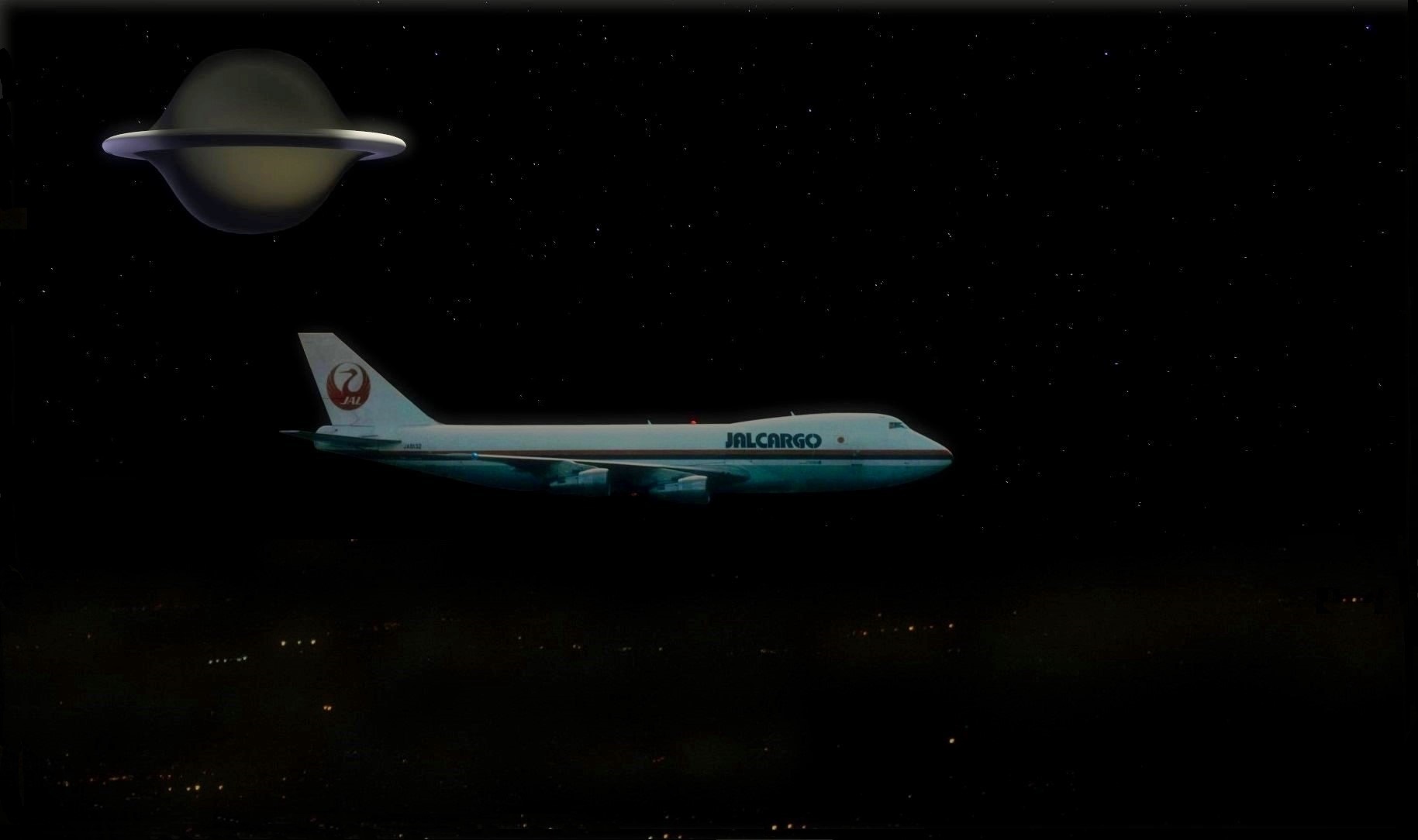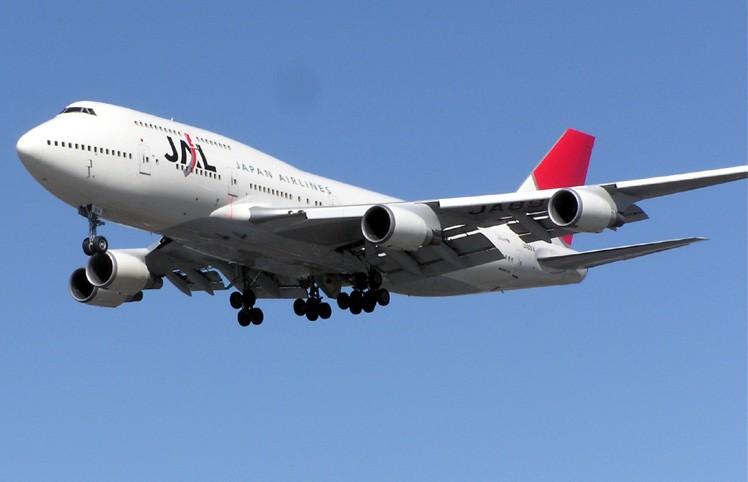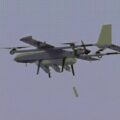On the evening of November 17th of 1986, Japan Airlines flight 1628, a Boeing 747-200F cargo aircraft, was en route from Paris to a layover in Anchorage, Alaska on its way to Tokyo. The three-person crew was led by pilot Kenju Terauchi, who would go on to report a seemingly inexplicable encounter in the skies over northern Alaska as they approached the airport in Anchorage.
The story told by Captain Terauchi, potentially corroborated by his First Officer, Takanori Tamefuji, and his flight engineer, Yoshie Tsukuba, would go on to become the stuff of legends. On account of this, anyone with even a moderate interest in the UFO/UAP topic has likely heard of the incident, which became one of the more hotly debated reports of an encounter with unexplained craft in our skies by a commercial airline pilot. The incident has been featured in multiple television programs and docuseries, and touted as one of the most compelling UFO reports in modern history. In addition to the eye-witness testimony given by all three crew members when they were interviewed during the investigation that followed, the FAA eventually provided radar data from the event and transcripts of radio tower chatter with the plane.
Questions about the event quickly arose, however, leading some to wonder if Captain Terauchi had truly witnessed anything extraordinary at all. Unfortunately, much of the FAA information seemed to go missing as the years went by, though various bits and pieces could still be found online. The debunking of UFO reports was already a thriving industry by the mid-80s, and the Japan Airlines flight 1628 incident was subjected to the same skeptical inquiries as all the rest.
However, this month FOIA government records archivist John Greenewald, proprietor of The Black Vault, completed a 17-year quest to acquire the full package of FAA records from that investigation, much of which had purportedly been destroyed. Following an update he published this week, The Debrief pored over this trove of documents to see if any more definitive answers regarding this long-standing case might be uncovered.
WHAT WAS IT THE PILOT CLAIMED TO HAVE SEEN?
You can read much lengthier recountings of the tale online, but we’ll provide the thumbnail version of the story here to get our readers started. On the evening in question, while approaching Anchorage, the crew of JAL1628 (primarily Terauchi) reported seeing two brightly illuminated objects off to the left of their aircraft. After initially ignoring them, assuming it was just random commercial or military traffic in the area, the objects reportedly moved closer to the cargo jet and began pacing alongside it.
At that point, Terauchi radioed the control tower in Anchorage to ask if there was any other traffic in the area. He was told there was not, but the tower did tell the captain that they were picking up other craft in his vicinity, though only intermittently. The pilot was granted permission to undertake a series of course and altitude changes to avoid a possible collision, but the objects continued to track the jet. At their closest approach, Captain Terauchi reported that the plane’s cabin was lit up brightly and the crew could feel heat emanating from them.
The two objects eventually departed, but they were then replaced by a much larger craft that Terauchi would later describe as a “mother ship” trailing behind them. That “chase” continued until shortly before Japan Airlines 1628 was approaching the airfield at Anchorage. The flight then landed safely and without incident.
ISSUES SOON AROSE OVER THE CREW’S REPORTS
Reading through all of the FAA documents, numerous details pop up, some of which appear to support the accounts of the crew members while others provide fuel for skeptics of their accounts. The FAA is traditionally very guarded about discussing anomalous sightings, but they conducted what appears to be a very thorough investigation in this case. Of potential interest is the fact that the government retained and highlighted an article published by Philip J. Klass in the magazine Special Reports in the summer of the following year.
Klass was well known as a skeptic of UFO encounter accounts and studied all of the data seeking mundane explanations as to what had actually happened. True to form, he cited numerous issues with the information that had been supplied and developed alternate explanations for some of the accounts of the crew as well as the data collected by the control tower.
The final determination that Klass reached was that the first two brightly lit objects seen by the crew were most likely bright stars peeking through the sporadic cloud cover and the “mother ship” behind the flight was probably the planet Jupiter. The public affairs officer for the FAA in Alaska seemed more than content to accept Klass’ analysis. He went on record saying that his agency “does not have the resources or the Congressional mandate to investigate sightings of unidentified flying objects.”
CONFUSION ARISES IN INTERVIEWS WITH THE JAPAN AIRLINES 1628 CREW
Some of the initial problems in the fine details of the investigation come with the transcripts of the interviews done with the crew. For example, the interview with Captain Terauchi conducted by Richard Gordon, the manager of the regional Flight Standards District Office, seems fairly coherent. But despite having an interpreter present, the interview appears to have been conducted in English and the Captain’s command of the language seems limited at best. He describes the various lights he saw and the events he remembers, but much of it is garbled. He also describes attempting to take a picture of the objects with his camera.
But the interviewer spends a lot of time asking him about previous UFO sightings he had reported. This was something Klass picked up on, describing Terauchi as a “UFO repeater” because he’d had two previous sightings. Klass describes this as a red flag, implying that, as a believer, Terauchi may have simply seen what he wanted to see. Of course, others might argue that Terauchi was a repeat experiencer and more likely to have such encounters. The captain later provided an extensive set of notes about his experience where he waxed poetic on the subject of UFOs.
Other problems arise with the interviews done with the other two crew members. The interview with First Officer Takanori Tamefuji was similarly done in English despite the presence of an interpreter. Much of it is barely understandable, but he does explain that he couldn’t see much of what was going on to the left of the plane because of his position on the right side of the cockpit. When the objects were directly ahead of the plane he describes them as being “only lights” and he couldn’t say they were distinguishable from stars.
The interview with flight engineer Yoshie Tsukuba is far more concise. The first question from Tsukuba is “may I speak Japanese?” The interpreter handles it from that point on and the record is presented in a quite clear and coherent fashion. He seems to lend at least some credence to the captain’s account, describing two types of “lights” that were not “town lights.” But he also could not make out any sort of craft or structure. They were just lights. That’s quite different from the captain’s descriptions.
THE HARD DATA PAINTS MORE OF THE PICTURE
Perhaps the best piece of data in this collection is the transcription of the radio traffic taking place during the entire event. It covers a period of more than half an hour, starting when Captain Terauchi first reports the unexpected “traffic” in his vicinity and lasting until the plane lands in Anchorage. It includes input from JAL1628, two air traffic controllers in the tower, the local military Regional Operations Command Center ROCC), and two other aircraft that were eventually pulled into the action.
There are several key moments in the transcript that can offer us more insight into what was taking place. At 02:25 (all times UTC) air traffic control tells Japan Airlines 1628 that they have picked up a radar hit five miles behind them and asks if they concur. The captain rejects that, saying the target is nearly straight in front of them. ROCC is asked if they have anything on radar and they say they’re getting some “surge” around the airliner but suspect it might be erroneous. Air traffic control counters that it’s not erroneous and that they are seeing two targets, but shortly after that they indicate that they’ve lost the radar track also. Another air traffic control station in Fairbanks also reports seeing nothing on radar except for the Japan Airlines flight.
This is an important clue because it takes us to the stored radar data provided by the FAA. After the returns were analyzed, the FAA concluded that what the control tower was seeing (and none of the other radar systems saw) was most likely an “uncorrelated primary and beacon target.” This is similar to a phenomenon seen with surface radar systems on naval vessels known as ghost returns. They represent an instance where the radar system’s receiver is “listening” and picks up a signal at an incorrect moment in the reception cycle, making it appear that an actual object is in a different position than it really occupies. Klass picked up on that explanation as well.

At 02:40, despite nobody else identifying another craft in the area, the tower asks the captain if he would like ROCC to scramble a jet to come look for the other craft. Captain Terauchi immediately responds by saying “negative, negative.” In his notes, Terauchi claims that he “recalled stories” about military planes being deployed to investigate UFOs and flying into danger, so he didn’t want to put them in that sort of a position. Later in the transcript, a United Airlines commercial cargo jet and a military C-130 are both diverted into visual range of Japan Airlines 1628 and report seeing nothing but the Japan Airlines flight in the sky.
CONCLUSION: WAS ANY OF THIS REAL?
This story has been covered so many times on “unexplained” television series and by ufology bloggers that many in ufology circles seem to take it as gospel. And the descriptions of some of these events that they rely on to make the case certainly do lend it the patina of truth. But when you poke too far into the gritty details, some of the flaws in the story become somewhat glaring.
We should not discount Captain Terauchi out of hand simply for having reported multiple incidents or being “a believer.” Many experiencers report multiple sightings. But with that said, other details found in this data should give us pause. Neither of the two crew members confirmed seeing anything except “lights” while the captain described an object with “nozzles.” The crews of two other aircraft saw nothing at all.
Out of four separate radar systems, two produced no returns, one had a momentary glitch that seemed erroneous, and the last one acquired a target briefly (if it wasn’t also a glitch) that simply disappeared. Some may argue that the technology observed in UAP is so advanced it can likely evade radar, and that’s a reasonable point. But if so, wouldn’t it evade all radar rather than just some of them?
Without seeming to throw cold water on anyone’s parade, a detailed examination of this FAA package leaves multiple holes in the story that, at a minimum, should leave us room to acknowledge the arguments being made by skeptics. What the tale of Japan Airlines 1628 boils down to is the eyewitness testimony of a single witness. Multiple other trained observers either saw nothing or reported “lights” that could have been stars or planets. And the type of technical data we all crave as supporting evidence, such as has been offered in some of the Navy encounters we’ve discussed here, is simply not in evidence. The reader is left to decide for themself, but on further analysis, this widely-popularized UFO incident doesn’t appear as strong as popular media would have us believe when subjected to close scrutiny.
Follow and connect with author Jazz Shaw on Twitter: @JazzShaw
Don’t forget to follow us on Twitter, Facebook, and Instagram, to weigh in and share your thoughts. You can also get all the latest news and exciting feature content from The Debrief on Flipboard, and Pinterest. And subscribe to The Debrief YouTube Channel to check out all of The Debrief’s exciting original shows: DEBRIEFED: Digging Deeper with Cristina Gomez –Rebelliously Curious with Chrissy Newton

